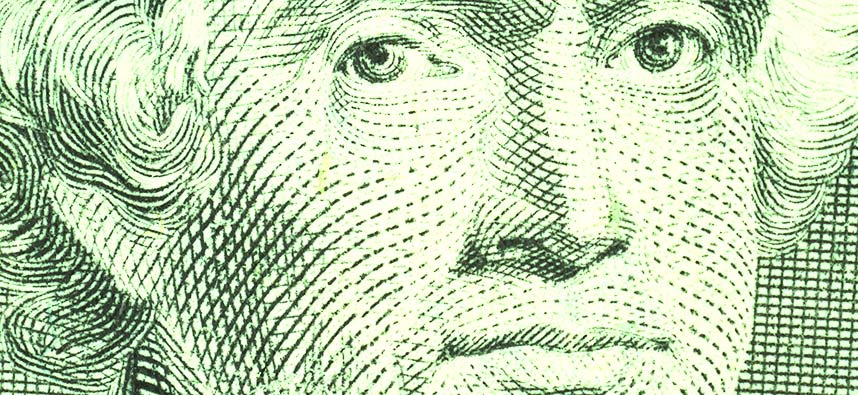
Interest(ing) Facts

Why US dollar debt is beyond control!
Thomas Jefferson declared that public debt is “the greatest danger to be feared.”
“I place economy among the first and most important republican virtues,” he declared. Perhaps Jefferson’s strongest admonition on the issue came in these wise words:
“We must not let our rulers load us with perpetual debt,” he said. “We must make our election between economy and liberty or profusion and servitude.”
Oh, Tom! That is so yesterday. Now we have really visionary people running things. People like Joe Biden, Janet Yellen, Nancy Pelosi, Chuck Schumer, and Jerome Powell. Times have changed!
Okay, so the iron laws of interest rates and compounding have not really changed, and a country can be swallowed by debt just as completely as Jonah was said to have been swallowed by the apocryphal whale.
The Committee for a Responsible Federal Budget tends to see things more Jefferson’s way. Interest rates may be low for the time being, but because the federal debt is humongous, interest expense is nearly 9 percent of revenue, or $2,400 per household.
Then what happens, asks CRFB, when interest rates rise? Good question, and they just might rise since we currently have the lowest interest rates in 4,000 years. Here is what CRFB calculates will happen as interest rates normalize:
- Each one percent rise in the interest rate would increase FY 2021 interest spending by roughly $225 billion at today’s debt levels. Growing debt levels not only add to the likelihood of such increases, but also the cost and risk associated with them.
- The federal government is projected to spend just over $300 billion on net interest payments in fiscal year 2021. This amount is more than it will spend on food stamps and Social Security Disability Insurance combined. It is nearly twice what the federal government will spend on transportation infrastructure, over four times as much as it will spend on K-12 education, almost four times what it will spend on housing, and over eight times what it will spend on science, space, and technology.
- If interest rates were one percent higher than projected for all of 2021, interest costs would total $530 billion — more than the cost of Medicaid. If rates were two percent higher, interest costs would total $750 billion, which is more than the federal governments spends on defense or Medicare. And at three percent higher, interest costs would total $975 billion — almost as much as is spent on Social Security benefits. On a per-household basis, a one percent increase in the interest rate would increase costs by $1,805, to $4,210. [emphasis added].
Figures in billions of dollars.
As we write, the 10 US 10-year Treasury yields about 1.5 percent. That is almost 3 percent below the 10-year rate’s long-term average. So, to make conceptualizing the problem easy, image if the interest rate on the entire US $28 trillion debt portfolio were five percent. That would be annual interest of $1.4 trillion — instead of the $300 billion cost today.
Q: How does a terminally indebted country come up with another trillion dollars plus each year?
A: By printing the money!
Here’s Jefferson again: “If the American people ever allow private banks to control the issue of their currency, first by inflation, then by deflation, the banks and corporations that will grow up around [the banks] will deprive the people of all property until their children wake-up homeless on the continent their fathers conquered. The issuing power should be taken from the banks and restored to the people, to whom it properly belongs.”
Gee, maybe old Tom was not so yesterday after all.
